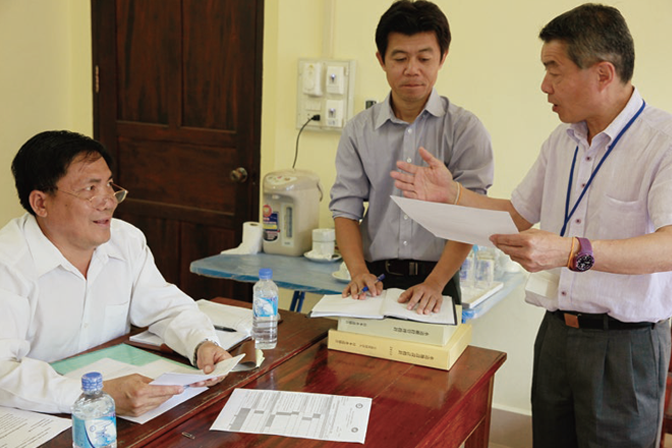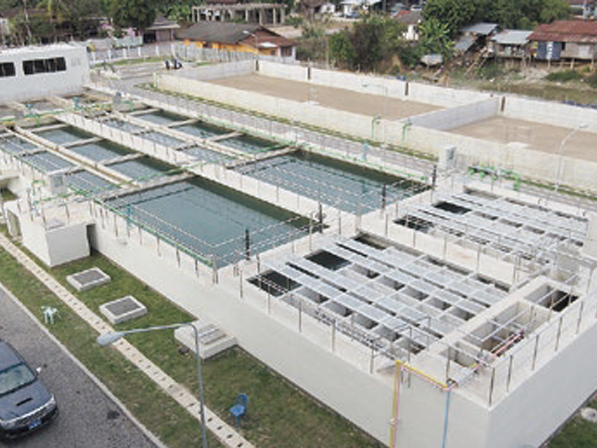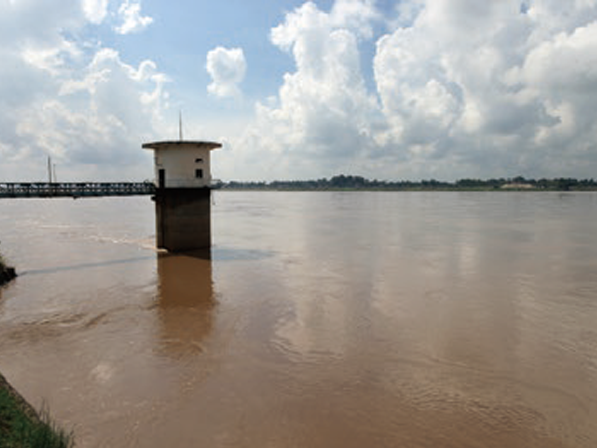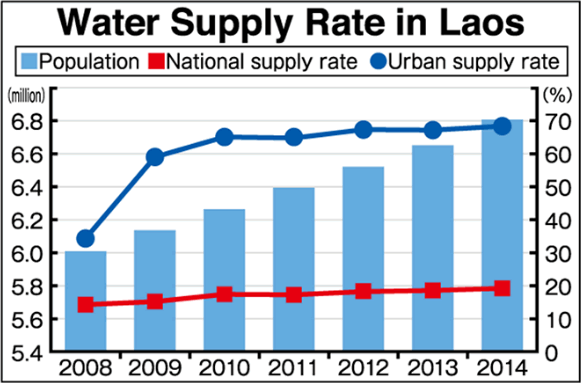Laos, a country of 6.7 million people, has been developing dramatically, with an estimated average economic growth rate of 7.67% over the past five years. But currently only about 20% of the population have access to safe piped water; in rural areas people depend on water from wells some of which may not be safe.
Japan, which has one of the world’s highest rates of public water supply coverage, along with good reliability, has been supporting the development of waterworks in Laos. One example is the construction of the water treatment plant in Thakhek, completed in March 2016 with grant aid under Japan’s Official Development Assistance (ODA) program. In addition to the financial assistance, Japan has for many years been providing assistance in close cooperation with Japanese local authorities that handle the supply of public water in Japan. The most active such effort currently underway is called MaWaSU, launched in 2012. This project aims to provide operational support to all 18 provincial water supply state enterprises (WSSEs) in Laos. In order to accomplish this in five years, the project chose and focused its support on three of the WSSEs to become mentors for the remaining WSSEs. Its full name in English is “Capacity Development Project for Improvement of Management Ability of Water Supply Authorities”; the short name is from the Japanese verb mawasu, meaning “cycle” or “circulate.” This bilingual pair of names refers to the project’s aim of enhancing the operational management capacity of WSSEs and implementing the plan-do-check-act (PDCA) cycle.
Masahiro Shimomura (right), an expert advisor dispatched to Laos by JICA, giving advice to staff at one of the three targeted provincial water supply state enterprises.
Masahiro Shimomura, serving as a long-term expert advisor from the Japan International Cooperation Agency (JICA) in Laos, explains the distinctive approach taken under this project: “Unlike a project where the donor country simply builds waterworks infrastructure, MaWaSU focuses activities aimed at autonomous development by the local authorities five to ten years in the future.” Shimomura had local waterworks employees draw up their own operational manual based on advice from the Japanese side. Putting it together themselves made them think concretely about future operations and maintenance management. As he explains, “After the waterworks network is constructed with technical and financial assistance from outside, it’s important for them to develop it at their own initiative. And for this purpose it’s necessary for sense of self-reliance to take root.” Economic considerations are also a crucial part of waterworks management. Shimomura offered advice on the importance of finding leaks and introduced Japan’s water supply volume analysis and other relevant technology. He conveyed the mind-set required to take proper advantage of technology and systems using a grass-roots approach tailored to those on the receiving side.
In areas where tap water has become available, women and children have been freed from the task of drawing water from wells, and living conditions have improved. Japanese waterworks experts are continuing to work with pride to increase the coverage of the water supply system in Laos and elsewhere, seeking to help create a world where safe tap water is a matter of course.
A waterworks education class at a primary school, conducted as part of the MaWaSU project. By learning about the process by which tap water is treated and supplied, children become aware of the value of safe water.



































































































































